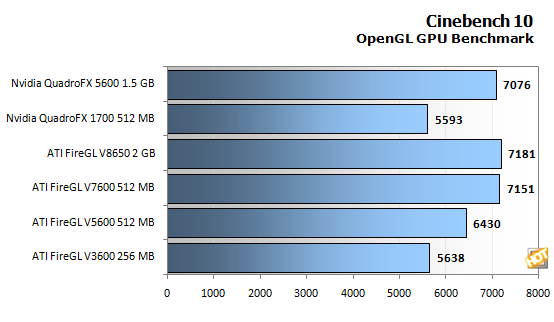 |
| Test System Details |
| Specifications and Revisions | |
- Intel Core 2 Extreme QX6850 (3.0 GHz) Quad Core (1333 MHz FSB)
- 4 x Kingston DDR2-800 CAS 4-4-4-15 Modules (4 GB Total)
- 1 x eVGA nForce 680i SLI LT Motherboard
- 1 x Western Digital Raptor 74GB 10,000 RPM SATA Hard Disk
- 1 x Plextor DVD+/-RW Serial ATA Optical Drive
- 1 x Corsair HX620W 620W Modular Power Supply
- Microsoft Windows XP Professional (32-bit)
- ATI FireGL V3600 256 MB (Driver version 8.44)
- ATI FireGL V5600 512 MB (Driver version 8.44)
- ATI FireGL V7600 512 MB (Driver version 8.44)
- ATI FireGL V8650 2 GB (Driver version 8.44)
- Nvidia QuadroFX 1700 512 MB (Driver version 169.61)
- Nvidia QuadroFX 5600 1.5 GB (Driver version 169.61)
Just as with our high-end workstation graphics card shootout, we’ve tested these mid-range cards with Windows XP. Both Nvidia and ATI claim XP to still be the dominant workstation-class operating system, and performance is fine tuned for this operating system in order to reflect that.
 |
| Synthetic OpenGL Performance |
| Higher Numbers Are Better | |

Our first test doesn’t bode well for Nvidia. Cinebench 10 shows a nice level of performance scaling between ATI’s low/mid/high-end workstation cards, although Nvidia’s mid-range QuadroFX 1700 card shows performance levels lower than that of the FireFL V3600 card, which costs half as much.







